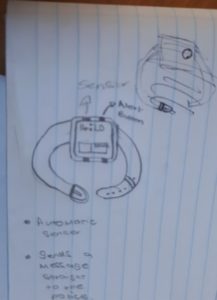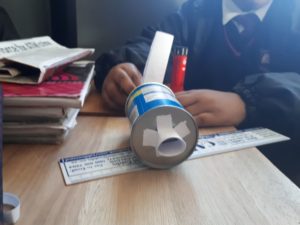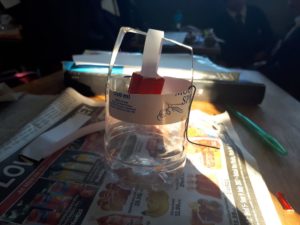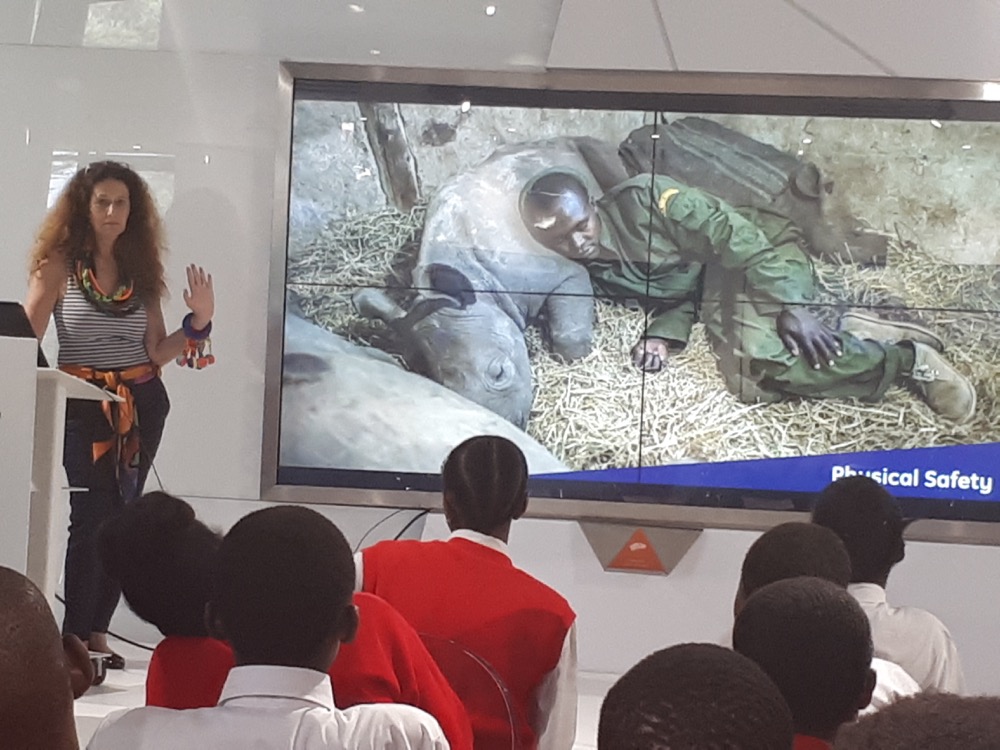JASA programmes incorporate a design-thinking approach to innovation
In JASA programmes, the facilitators introduce learners to design thinking, a step-by-step approach to coming up with innovative solutions to problems. Students are encouraged to look around their environments and identify problems they want to tackle. Then the students work on innovations that will provide solutions, in the form of products or services.
But first… what is an innovation?
Well, it is a new idea, method or product.
- It can improve an existing solution, such as cars becoming more efficient, or mobile phones having better cameras.
Or
- It can be new and disruptive.
Examples of disruptive innovations include:
- Digital film technology completely overtook the traditional film industry
- Airbnb has disrupted the traditional hotel model by linking host accommodation to potential guests. Since they don’t own hotels or employ staff this means far less risk for the company.
Sometimes, taking the initiative to apply an existing solution to solve a problem in your community can be innovative since you are using a method that wasn’t there before.
At age 14 William Kwamkamba built a windmill to power his family’s home. Even though windmills existed in the world, he found a cost-effective way of making one. You can hear his story here.
One South African innovator is Danielle Mallabone. When she was 17 years old, after seeing the film Titanic, she was inspired to create a thermal lifejacket. She even tested it herself by being immersed in 10° C water for an hour! Luckily the heat effect of her lifejacket worked. You can read about her story here.
So what is the process of design thinking and why is it effective to come up with solutions?
Design-centred innovation
1. Recognise a need, challenge, opportunity or pain point
The first step is to look around you to see what needs there are in your community and identify a problem you want to address.
2. Understand your operating environment
Speak to those affected by the problem to help you generate products and services that people need and want.
3. Frame issue – Problem Statement
You need to keep questioning to scratch below the surface to understand the problem from different angles and to see what the real issues are.
4. Ideation
Once you have decided on a problem, consider many options of how to address it and write down all the ideas you and your team think of. Handle your new ideas with care because they can be fragile until they are developed.
Listen to feedback. Perhaps you have a good idea but there is already a product on the market. Maybe your idea has a flaw that you hadn’t noticed. Useful feedback may mean that you have to rethink your idea. Most entrepreneurs go through this process of refining their ideas, over and over again. Those that succeed are the ones who didn’t give up!
4. Prototype and test
You can also make sketches of your ideas or basic prototypes using materials such as cardboard, glue, pens etc. Making a model in the early stages makes it easier to test your idea in the real world.
5. Iteration (repeat the process)
You may need to test your idea and then make changes and go through this process a few times. Often an initial idea will change into something different. Allow this to happen.
JASA facilitators have been hosting two-day workshops on design thinking for learners on some JASA programmes and the insights gained will be taken into consideration in the programmes review.
Avive Papier, a learner at Orion Secondary School in De Aar, said this method gave her a way to gain insight into how things could be improved. Students were encouraged to use anything around them to make prototypes and they found the process so exciting that they didn’t want to stop.





Design-based innovation is used at the SABS Design Institute. An industrial designer and mentor there, Sibusiso Mkhwanazi, explains this process here. Recently nine JASA Alumni and Junior Innovators Competition winners from the past years went through a year-long incubation programme, were they repeated the design innovation steps until they came up with refined ideas that they could prototype. You can read about their journey here.
Here are two examples of emerging companies in South Africa who have come up with innovative solutions to problems.
Empty Trips
Have you ever thought about what happens to the empty space on trucks doing return trips. Well nothing really… until recently. Empty Trips are launching an online trip exchange platform designed to match transport companies having space capacity with those who can make use of it, through an online auction system. This start-up won the Africa Chivas Regal Pitching Den Competition at the 2017 SA Innovation Summit. They represented South Africa at the 2018 Startup World Cup in San Francisco on May 11.
Spoon
Spoon is another company addressing a local market. There are around 800 000 stokvels in South Africa and yet these informal savings groups, and the people who borrow from them, cannot gain access to the traditional banking industry. This is where Spoon steps in as an intermediary, by providing an online stokvel management system and providing 30-day loans to the stokvels to pool their money for the collective benefit of all members.
Anyone can follow the tried and tested design-centred approach to come up with a solution to a problem.







